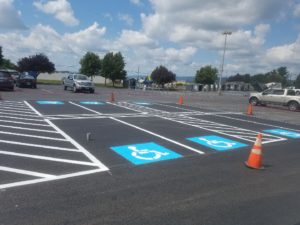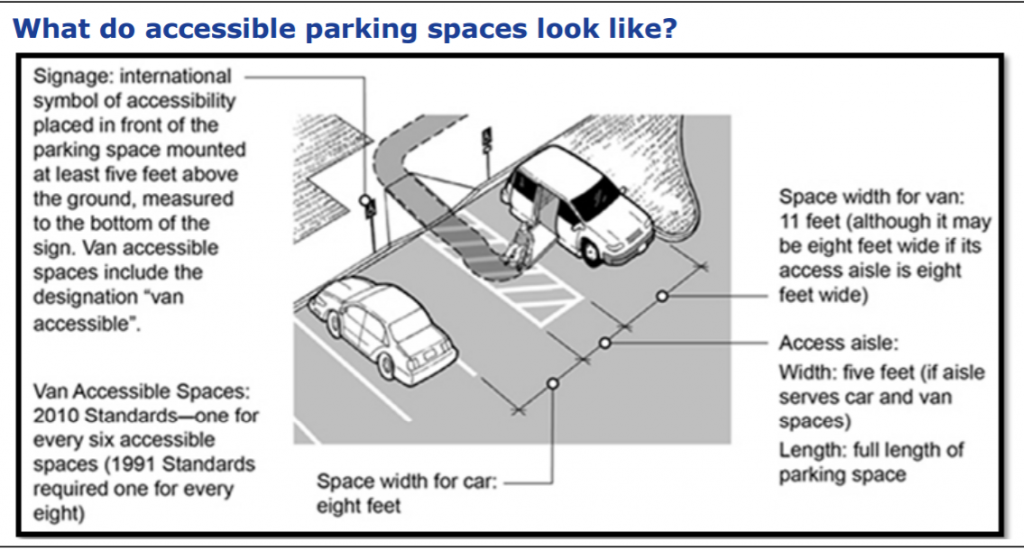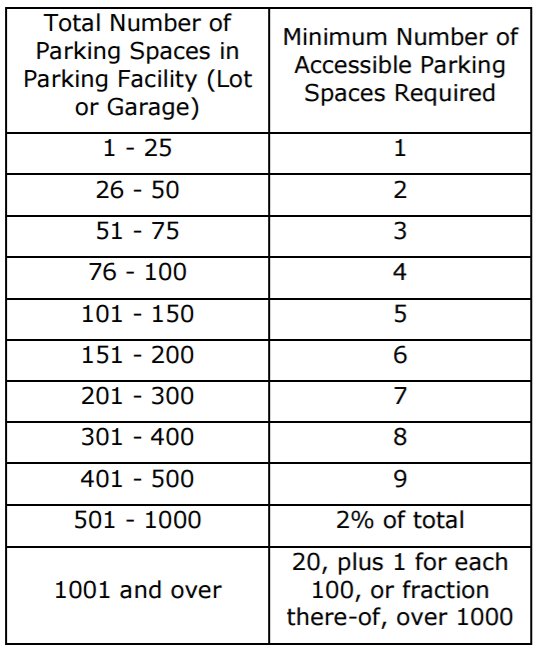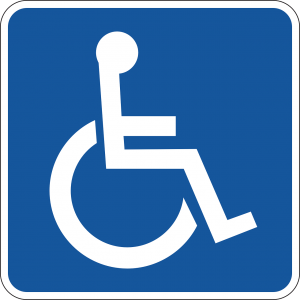 Even though you may own the property, parking lots are basically public places. Just like the sidewalk outside your home, your parking lot must be maintained so that anyone can use it safely. That means you have certain responsibilities, including maintaining the correct number of handicapped parking spots.
Even though you may own the property, parking lots are basically public places. Just like the sidewalk outside your home, your parking lot must be maintained so that anyone can use it safely. That means you have certain responsibilities, including maintaining the correct number of handicapped parking spots.
Keeping It Legal at the Local, State, and Federal Levels
As with most laws, your location will determine your parking lot’s restrictions. Every township, borough, county, and state has the right to develop their own laws regarding parking lot design, construction, and accessibility.
For instance, the City of Philadelphia has strict rules regarding the design of off-street parking. (Check out their guide here!) Knowing what requirements – if any – your local government demands is something you can discuss with your local ordinance board.
“When it comes to parking lots, the ADA has three basic standards: size, number, and access.”
ADA-Compliant Handicapped Spaces
There are too many governments in our service area to track down the requirements everywhere, but there’s one law that everyone should be familiar with. The American with Disabilities Act (ADA) lays out the minimum requirements for parking lots, as well as many other pathways and access points.
The purpose of the ADA is to ensure that people with disabilities have equal access to government, residential, and commercial resources. In other words, people with disabilities need to have access to your property.
When it comes to parking lots, the ADA has three basic standards: size, number, and access.
Size

According to the ADA, the minimum width of a parking space is eight feet. For parking spaces designed for vans with wheelchair lifts, the minimum width is 11 feet. The aisles beside lift vans should be at least five feet wide. If you don’t like that set-up, you are permitted to have a van-accessible spot that is only eight feet wide, but it must have an adjacent aisle that is at least eight feet wide.
Standard parking spaces are 18 feet long (no minimum is defined by the ADA). It’s also worth mentioning that state and local codes could require you to have larger spaces than the ADA requires, but they cannot permit you to have spaces smaller than those called for by the ADA.
Number
How many spots you need depends on the size of your parking lot. Lots with 1-25 spaces need only one handicapped spot to be ADA compliant. A parking lot with 1001+ spaces must have 2% of all spaces designated for handicapped parking.

Accessibility
To keep with the spirit of the American with Disabilities Act, the spaces dedicated to handicapped parking must be safe for the individuals parking there. This means that those spaces must be:
- Smooth enough to facilitate wheels
- Stable enough to support individuals of all shapes, sizes, and abilities
- Virtually level, preventing falling and undesired rolling
- Equipped with at least 98” clearance for wheelchair lift vehicles
Furthermore, all access lanes must be painted with diagonal “hatch marks,” to indicate that they are not meant for parking.
Parking Signage & Other Factors

With few exceptions, handicapped parking spaces generally requires parking signage. All handicapped spaces require The International Symbol of Accessibility. Van-accessible spaces must contain the phrase “van-accessible.” The bottom of your parking signage should be at least five feet off the ground. Because they are more likely to receive disabled individuals, most medical facilities have higher standards when it comes to ADA compliance.
Other relevant laws may matter, when it comes to parking space design. For instance, the Fair Housing Act could require a property owner to create and reserve a handicapped spot for a specific individual.
The ADA, as well as state and local ordinances, may change from time to time. Most updates do not require you to change your parking lot striping until your next parking lot maintenance update.
Everything described so far is general advice, according to the ADA as it is currently written. You should contact your local ordinance board to get the most current requirements before every restriping.
If you have questions about ADA compliance, parking signage or want to schedule a restriping to get your parking lot up to speed, call our owner, Matt Odhner at Quick Lot right now!
